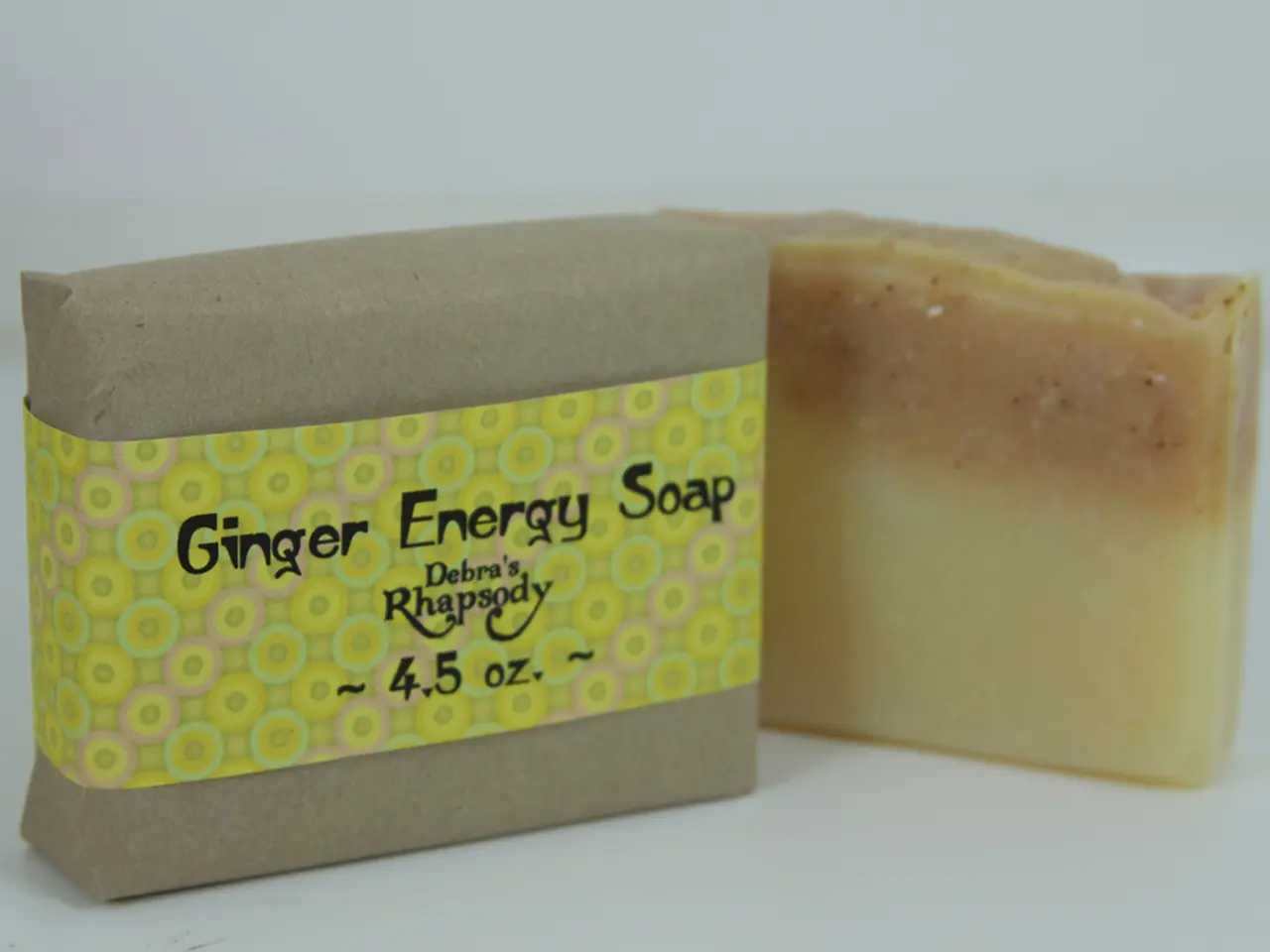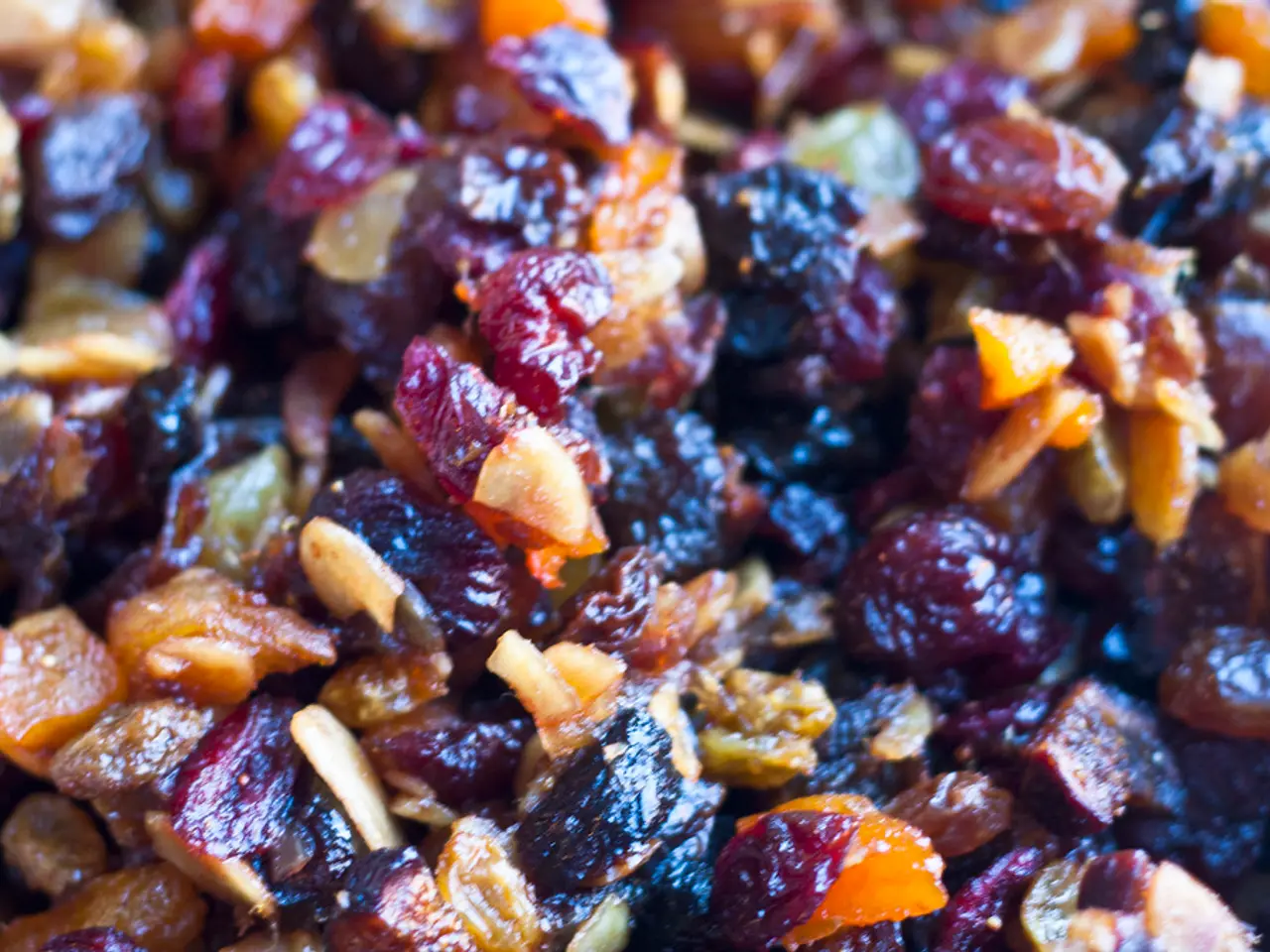COVID-19 Safety Measures: Analyzing the Continuous Research on Mask Efficiency
In the ongoing battle against COVID-19, face masks have emerged as a crucial line of defence. A recent analysis reveals a clear hierarchy in the effectiveness of various face masks, with respirators like N95 and KN95 providing superior protection compared to surgical and cloth masks.
N95 and KN95 masks, confirmed to be the most effective in filtering respiratory particles, including the SARS-CoV-2 virus, are the gold standard for COVID-19 prevention, especially in high-risk or indoor settings. Their superior filtration efficiency significantly reduces COVID-19 transmission[1].
Surgical masks, though less effective than respirators, still play a significant role. They are effective in reducing respiratory symptoms and symptomatic COVID-19 seroprevalence, providing moderate protection[1]. For instance, a pragmatic randomized superiority trial in Norway showed that wearing surgical masks in public spaces reduced self-reported respiratory symptoms by approximately 29%[1].
Cloth masks, while commonly used, offer the least protection among these types. Their effectiveness varies widely depending on fabric, layers, and fit. Cloth masks provide some barrier against droplets but are less effective than surgical masks and respirators[1].
Mask-wearing in general has been demonstrated to reduce the incidence of COVID-19 symptoms and infections even with moderate compliance rates, indicating community-level benefits[1]. However, studies on mask mandates in schools find mixed results, with some evidence showing that school mask mandates do not significantly affect COVID-19 case rates among children when adjusted for testing and other factors[3].
Research from China suggests that wearing masks may have psychological and behavioral effects beyond physical protection, potentially reducing deviant behaviours by increasing moral awareness[5].
It's important to note that the Los Angeles school district requires students to use "well-fitting, non-cloth masks with a nose wire". Despite this, Professor Alison McMillan, the Commonwealth Chief Nursing and Midwifery Officer in Australia, claims that there is no evidence to suggest that we should be moving towards N95 respirators in the community setting[2].
Meanwhile, Mary-Louise McLaws, a University of New South Wales epidemiologist, claims that there's no evidence yet that a N95 mask will protect you more than a surgical mask for Omicron[4].
Respirators with an exhalation valve, such as some N95 and KN95 masks, have been found to reduce particle emissions to levels similar to or better than those provided by surgical masks, procedure masks, or cloth face coverings[6]. Surgical tape secured over the valve from the inside of the respirator can provide source control similar to that of a respirator with no exhalation valve.
The Centres for Disease Control and Prevention (CDC) has prepared guidelines for optimizing the supply of respirators, recommending reusing respirators at most five times[7]. Peter Tsai, the inventor of N95 mask material, says that N95 masks can be rotated, with one mask every 3-4 days, with no change in the mask's properties[8].
However, an opinion piece in Newsweek claims that the effectiveness of respirators is vastly overestimated, and there is scant evidence that they stop community transmission[9].
In conclusion, while N95 and KN95 masks provide the highest level of protection, they should be reserved for healthcare workers and other high-risk individuals. Surgical masks and well-fitted cloth masks, when used correctly, can still offer significant protection in the community setting. The key is to ensure that masks are used correctly, fit well, and are changed or cleaned regularly.
[1] https://www.ncbi.nlm.nih.gov/pmc/articles/PMC8361937/ [2] https://www.abc.net.au/news/2021-09-29/no-evidence-to-use-n95-masks-in-community-says-nursing-officer/100597182 [3] https://www.ncbi.nlm.nih.gov/pmc/articles/PMC7985078/ [4] https://www.abc.net.au/news/2022-01-20/omicron-masks-n95-surgical-cloth-covid-19/100916386 [5] https://www.ncbi.nlm.nih.gov/pmc/articles/PMC7285523/ [6] https://www.cdc.gov/coronavirus/2019-ncov/hcp/respirators-strategy/index.html [7] https://www.cdc.gov/coronavirus/2019-ncov/hcp/respirators-strategy/reuse-conservation.html [8] https://www.forbes.com/sites/brucelee/2020/04/13/the-inventor-of-n95-mask-material-says-you-can-reuse-your-mask-and-it-will-still-be-effective/?sh=69d072e813b7 [9] https://www.newsweek.com/masks-covid-19-cdc-n95-respirators-1617250
- Beyond COVID-19, AI in research and science is making strides in areas like health and wellness, fitness and exercise, autoimmune disorders, mental health, men's health, skin care, and nutrition.
- For instance, AI-powered regression models are being used to predict skin conditions and counsel on appropriate therapies and treatments.
- In environmental science, AI is helping to track climate change and its effects on manufacturing industries.
- AI is also making inroads into the finance industry, providing insights on energy markets, investments, wealth management, real estate, and the stock market.
- However, concerns regarding cybersecurity and privacy have arisen as AI continues to permeate our lives, with influences on lifestyle, fashion and beauty, food and drink, and personal finance.
- In terms of medical conditions, AI is being used to study and manage conditions such as cancer, respiratory conditions, neurological disorders, and eye health.
- Therapies and treatments for aging, women's health, and mental health are also being developed with the aid of AI.
- On the topic of environmental science, AI is being used to monitor and predict the impacts of climate change on our planet, including social, economic, and environmental aspects.
- In terms of the manufacturing industry, AI is being used to optimize processes and reduce energy consumption, contributing to the industry's sustainability efforts.
- AI is also being used to analyze and predict traffic patterns in transportation, improving safety and efficiency.
- In the realm of mental health, AI is being used to develop chatbots and apps for therapy and counseling.
- AI is also being used to detect and treat skin conditions, providing a non-invasive method for skin care.
- For those with aging, women's health, ormental health concerns, AI-powered diagnostics and treatments can offer improved care and outcomes.
- AI is being used in the retail sector to personalize shopping experiences, recommend products, and manage inventory.
- AI is also being used in the fashion and beauty industry to predict trends and design collections.
- In the food and drink industry, AI-powered nutrition analysis can help consumers make healthier choices.
- In terms of personal finance, AI is being used to analyze spending habits, provide financial advice, and manage investments.
- AI is being used to detect and manage autoimmune disorders, providing early diagnosis and treatment options.
- In the realm of climate change, AI is being used to predict and mitigate the impacts of extreme weather events on agriculture, infrastructure, and ecosystems.
- AI is also being used to optimize energy consumption in buildings and cities, reducing carbon emissions.
- In the manufacturing industry, AI is being used to improve efficiencies and reduce waste, lowering costs and increasing profitability.
- AI is being used to analyze and predict traffic patterns in the transportation sector, improving safety and reducing congestion.
- In terms of mental health, AI-powered chatbots and apps can provide immediate support and counseling, reducing the stigma associated with seeking help.
- AI is being used to help detect and treat eye health conditions, offering non-invasive diagnostics and treatments.
- AI is also being used to detect and manage skin conditions, providing timely and effective treatment options.
- For those with cancer, AI-powered diagnostics and treatments can offer improved accuracy and outcomes.
- AI is being used to develop personalized fitness and exercise programs, tailored to individual needs and goals.
- In the realm of neurological disorders, AI is being used to develop drugs and treatments, as well as to monitor and manage symptoms.
- AI is also being used to detect and manage respiratory conditions, providing timely and effective treatment options.
- In the fashion and beauty industry, AI is being used to analyze trends and predict future styles, helping designers create more sustainable and socially responsible collections.
- In the food and drink industry, AI-powered nutrition analysis can help consumers make more informed decisions about their diets and health.
- AI is being used to predict and manage the impacts of climate change on various industries and sectors, helping us take proactive steps towards a more sustainable future.




